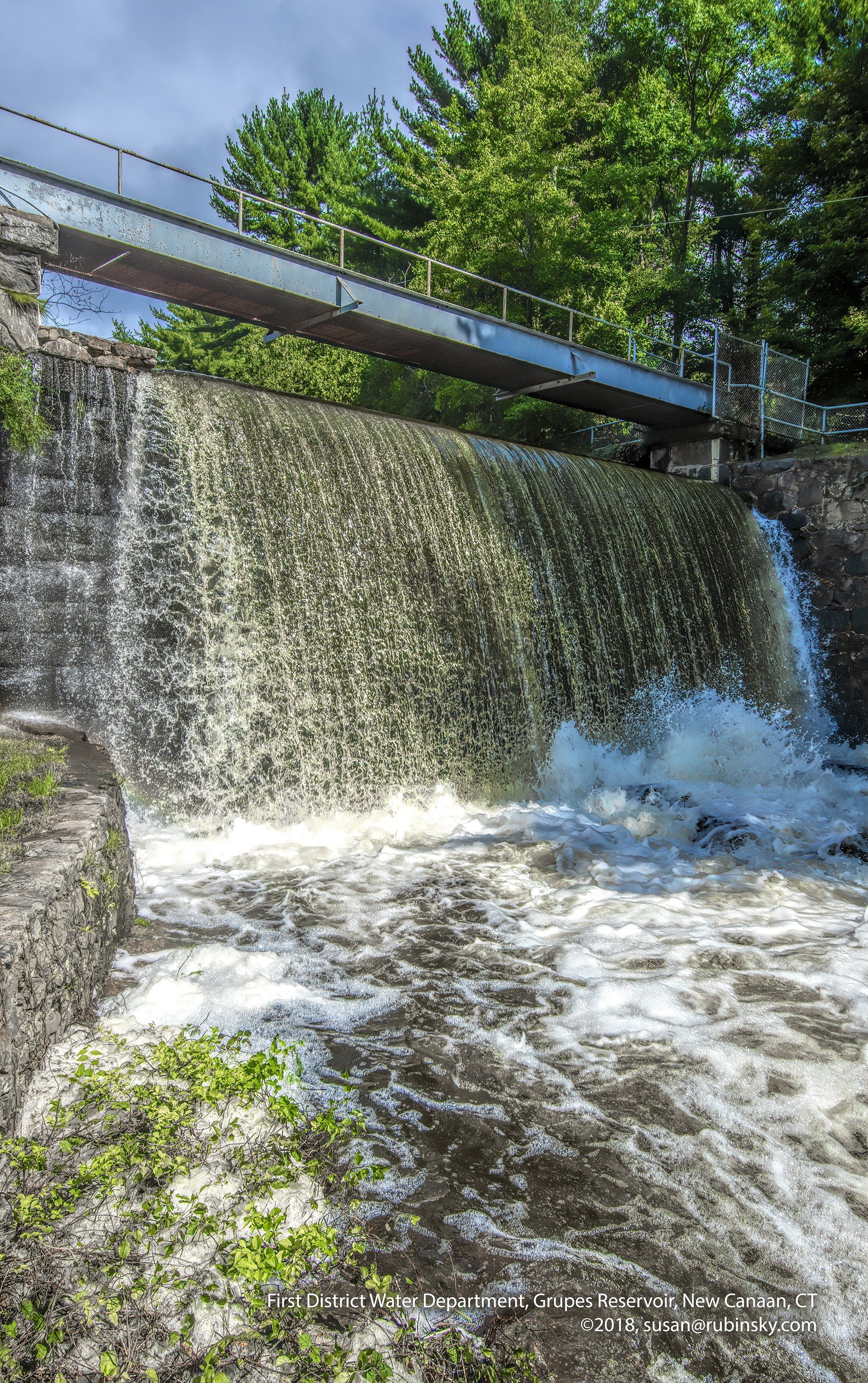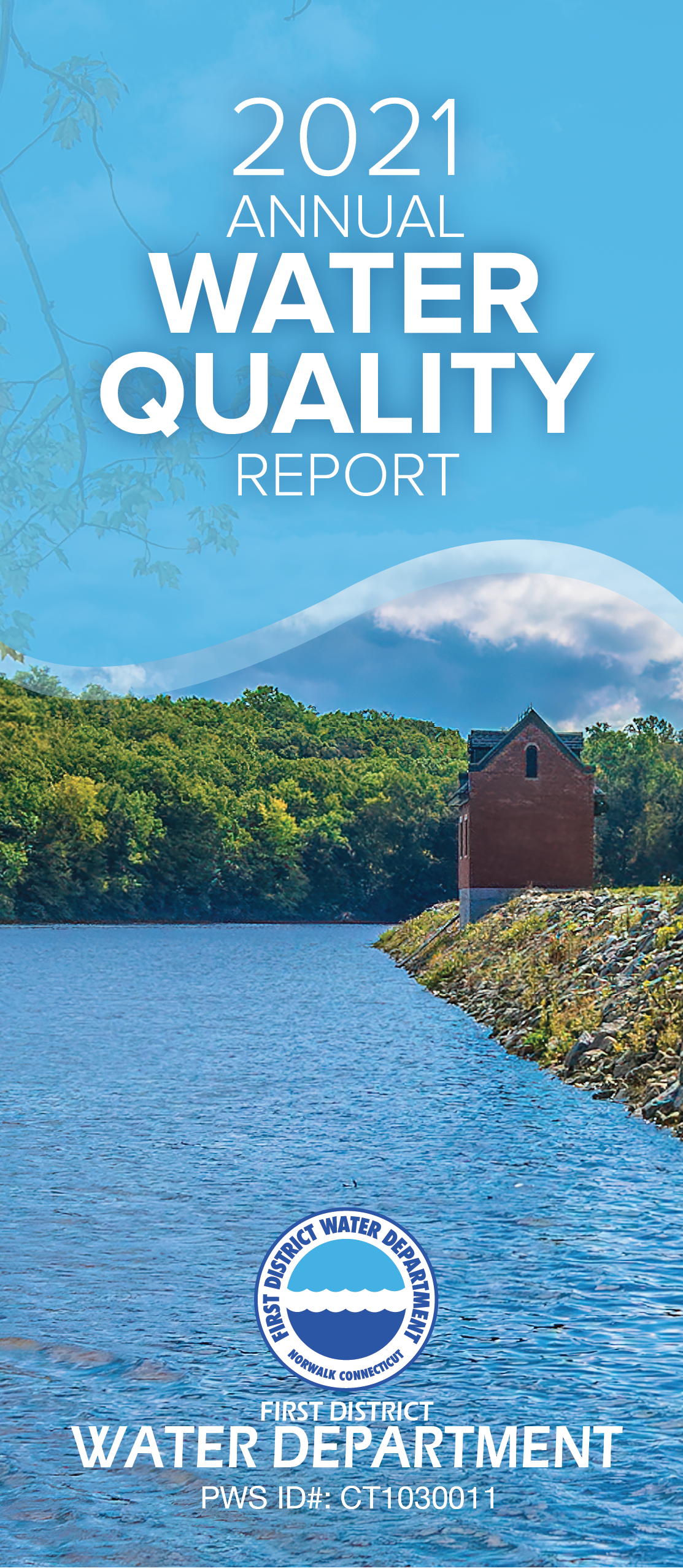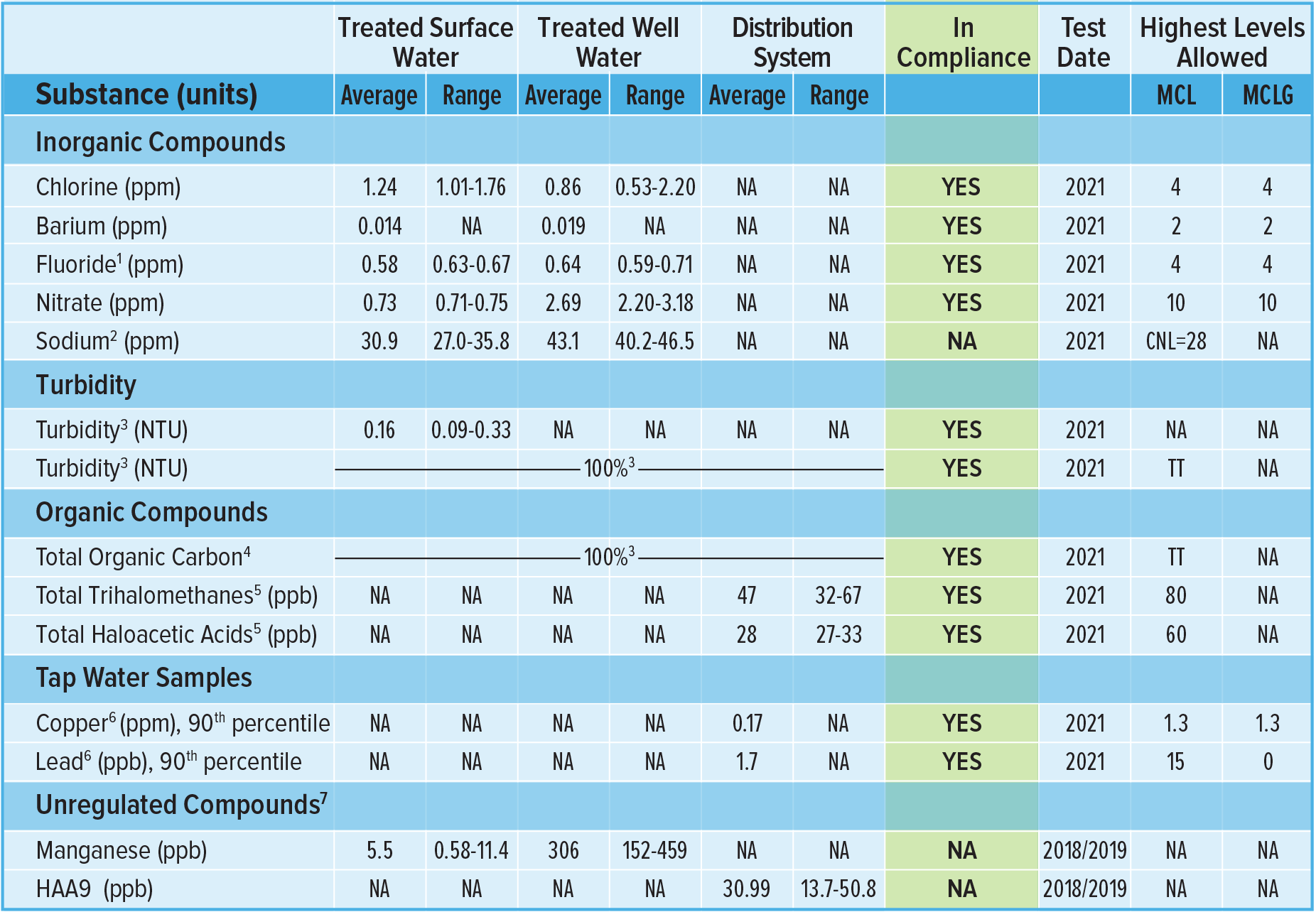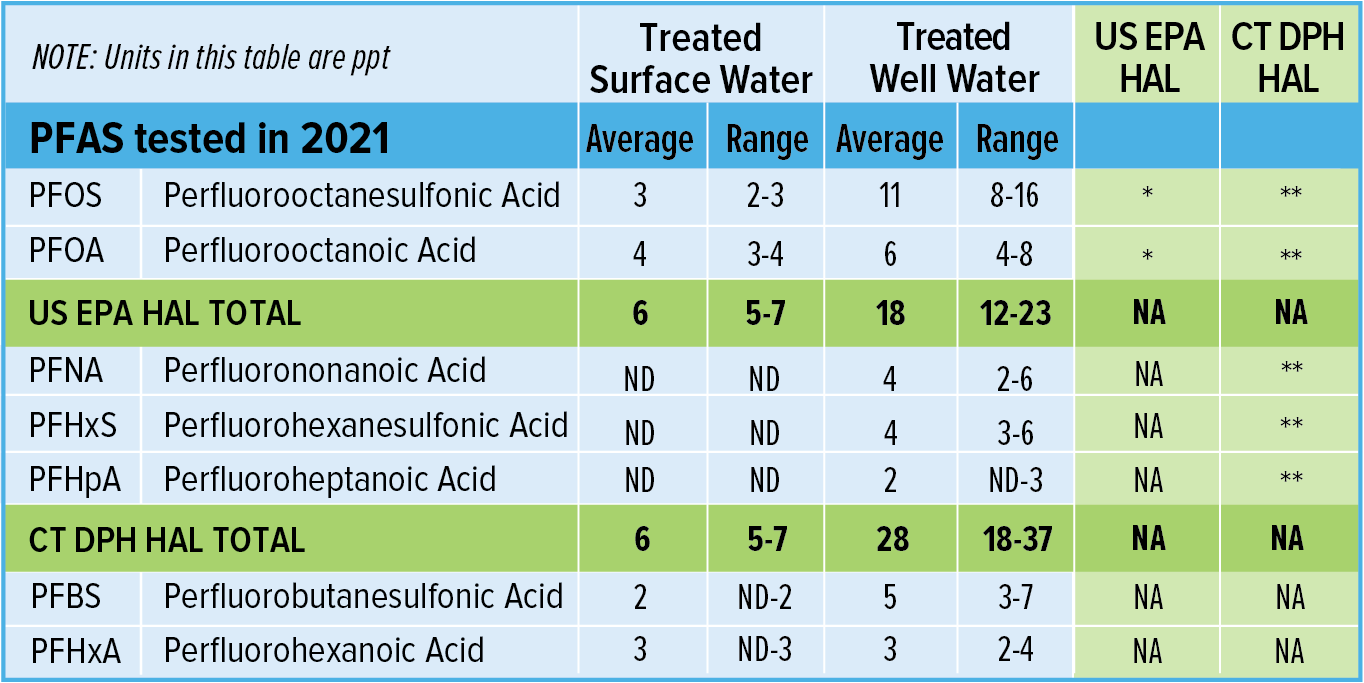2021 Water Quality Report
Letter to Our Customers
Dear Customer:
We are pleased to present you with this year's Water Quality Report. Despite the unique challenges of the COVID-19 pandemic, the First Taxing District Water Department has again achieved the goal of meeting the very stringent water quality standards set by federal and state regulatory agencies. This report covers water testing performed throughout 2021.
Our top priority is to provide a safe and reliable supply of drinking water to all of our customers. Each year the water department's laboratory processes thousands of water quality analyses for compliance purposes. This testing includes the source water, the treated water as it leaves the filtration plant and well field, and the water as it travels through the distribution system pipes and into your homes and businesses.
Water quality and water usage have continued to be topics of interest in Norwalk and throughout our region. This report contains important information on water quality issues like lead, PFAS, and other contaminants. The drought experienced in 2020 has brought renewed attention to water usage. As a result, the District enacted Mandatory Sprinkler Landscape Irrigation Conservation Measures to ensure the long-term sustainability of our water resources.
You are always welcome to attend our monthly Board of Commissioners meetings, either remotely via Zoom, or at our main office, 12 New Canaan Avenue, Norwalk 06851. The times and dates of meetings are posted on our website at firstdistrictwater.org/2022-boc-meetings. Please also feel free to call or write to us and to visit our website at firstdistrictwater.org for additional information.
Sincerely,
Elsa Peterson Obuchowski, Chairman
Commissioners, First Taxing District
2021 Water Sampling
During 2021 the FTDWD staff has taken thousands of water samples in order to determine the presence of biological, inorganic, volatile organic and synthetic organic contaminants. These samples were taken at the reservoirs, the treatment plant, and the well field, and also at representative sample sites around the distribution system. The table below shows only those regulated substances that were detected in the treated water. All of the substances found meet all state and federal standards. The most recent year sampled is noted in the table.
Footnotes
1 - Amount detected; ranges are monthly averages.
2 - There is no federal MCL for sodium but Connecticut has established a notification level of 28 mg/L. If you have been placed on a sodium-restricted diet please inform your physician of the sodium content in our water. For people on a regular diet this level of sodium is very low.
3 - Turbidity is a measure of the clarity of the water. It is monitored because it is a good indicator of the effectiveness of the filtration system. 95% of the samples need to be less than 0.3 NTU. The District met the regulation requirements 100% of the time. Amount is an average of the highest monthly readings.
4 - The District’s water met the required removal rate 100% of the time.
5 – Amount is the running annual average of quarterly measurements in the distribution system. The range represents the results of the individual monitoring sites.
6 - Tap water samples were collected for lead and copper analyses from over 60 homes throughout the service area. The lead and copper results at the 90th percentile did not exceed the AL.
7 – Unregulated Contaminated Monitoring Rule (UCMR) 4 monitoring was completed in 2018 and 2019. EPA uses the UCMR to collect data for contaminants that are suspected to be present in drinking water and do not have health-based standards set under the Safe Drinking Water Act (SDWA).
Acronyms and Definitions
AL (Action Level): The concentration of a contaminant which, if exceeded, triggers treatment or other requirements which a water system must follow.
CNL: State of CT Customer Notification level.
HAL (Health Advisory Level): An estimate of acceptable drinking water levels for a chemical substance based on health effects information. This is not a legally enforceable Federal standard, but serves as technical guidance.
MCL (Maximum Contaminant Level): The highest level of a contaminant that is allowed in drinking water. MCLs are set as close to the MCLGs as feasible using the best available treatment technology.
MCLG (Maximum Contaminant Level Goal): The level of a contaminant in drinking water below which there is no known or expected risk to health. MCLGs allow for a margin of safety.
NA: Not Applicable.
ND (Non Detect): Results below the method detection limit.
NTU (Nephelometric Turbidity Units): Measurement of the clarity, or turbidity, of water. Turbidity in excess of 5 NTU is just noticeable to the average person.
ppm (parts per million): One part substance per million parts water (or milligrams per liter).
ppb (parts per billion): One part substance per billion parts water (or micrograms per liter).
ppt (parts per trillion): One part substance per trillion parts water (or nanograms per liter).
TOC: Total Organic Carbon.
TT (Treatment Technique): A required process intended to reduce the level of a contaminant in drinking water.
Compound Sources
Per- and Polyfluoroalkyl Substances (PFAS)
*EPA Health Advisory Level (HAL) is 70ppt combined or greater for PFOS + PFOA
**CT DPH Health Advisory Level (HAL) is 70ppt combined or greater for PFOS + PFOA + PFNA + PFHxA + PFHpA
***Currently, no criteria for HAL has been determined at the state or federal level
Request
More Information
About Our Water
How FTDWD Water Is Treated






